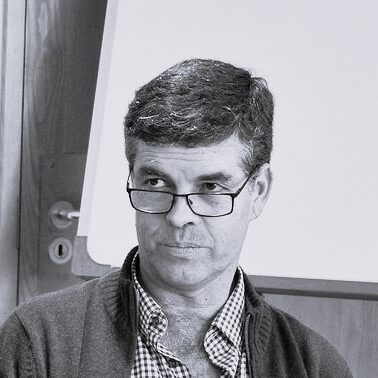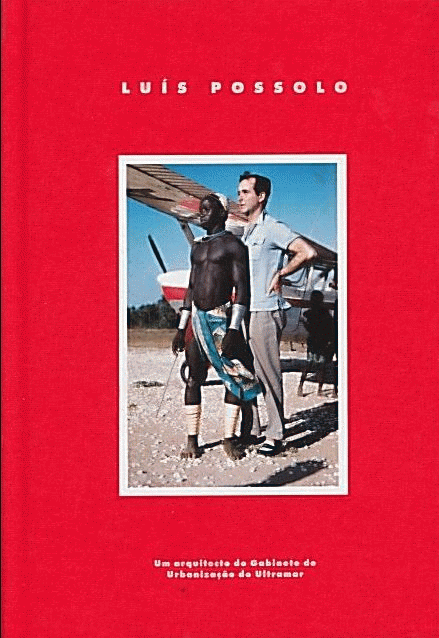GUC – The Colonial Urbanization Offices: Architectural Culture and Practice
This study aims to inventory, catalog and analyze the work of successive Offices that belonged to the structures of the Ministries of the Colonies and later of the Overseas (henceforth designated overseas ministries) and that were responsible for the architectural and urban initiatives of the central power in the overseas regions during the Estado Novo between 1944 and 1974. The research project is part of a more comprehensive study about the city and architecture produced in the former colonial territories, the aim of which is to further the knowledge of the intellectual and constructed heritage generated by the Portuguese and to make it available to the public at large by means of an on-line consultation system. In the first phase, the main aim is finding a way to make the consultation of these projects accessible and to compile essential information (name of the project architects and engineers, location, date, etc.). In the second phase, the objective will be to locate and describe the current condition of the building constructed in the former colonies that resulted from the work of these project offices; this will provide us with a real and objective panorama of its meaning and importance for the first time.
These project structures go under three names: Colonial Urbanization Office (Gabinete de Urbanização Colonial), Office for the Urbanization of the Overseas (Gabinete de Urbanização do Ultramar), and the Direction of Urbanization and Housing Services (Direcção de Serviços de Urbanização e Habitação) which belonged to the General Direction of Public Works and Communications of the MU. Using factual data (inventorying of the projects and their description, location and buildings constructed), the aim is to understand and describe the project culture of the technicians involved in these offices (architects and engineers with various specialties).
Their technicians made projects for all the Portuguese colonies, namely in Africa, India and Asia. Most of the architectural programs were intended for the construction of public administration buildings, hospitals or schools. There are also examples of sports buildings, religious buildings (exceptional requests) and housing for the families of civil servants. The latter group also includes summer houses and tourist buildings. The projects for the sewerage system and water collection are equally important, with the structuring of public networks for private and collective use (e.g. through public fountains). The existing processes are generally made up of designed and written pieces of architecture, designed and written pieces of engineering (structures and sewerage) and, less often, estimated budgets, or more rarely, data on the development of a specific project (alterations or its non implementation).
The technicians that belonged to the staff of these offices will also be studied. The research aims to compile information about the private estate of these architects and engineers, related to their official functions in order to determine the level of knowledge they had for the places they made projects. A further objective is to record testimonials on video with a view to a “future memory”.
ISCTE-IUL
AHU (PT)
Team

Ana Canas Delgado Martins
RESEARCHER

Cláudia Morgado
Researcher

Eduardo Costa Dias
Researcher

Isabel Boavida
Researcher

João Afonso
Researcher

João Vieira
Researcher

Jorge Figueira
Researcher

José Luís Saldanha
Researcher

Luís Marques
Researcher

Maria Manuela Portugal
Researcher

Paulo Tormenta Pinto
Researcher

Rute Figueiredo
Researcher

Vasco Moreira Rato
Researcher

Catarina Cândido
Researcher

Catarina Serafim
Researcher

Lígia Ferreira
Researcher

Patrícia Cordeiro
Researcher

Tiago Lourenço
Researcher
Results
BOOK CHAPTERS
Milheiro, Ana Vaz (2011). Fazer Escola: a arquitectura pública do Gabinete de Urbanização Colonial para Luanda in PRADO, Goycoolea R.; MARTÍ, Paz Nuñez (coord.), La Modernidad ignorada – arquitectura moderna em Luanda. Madrid: Universidad Alcalà, p.98-131 ISSN 978-84-88754-44-8
Milheiro, Ana Vaz (2011). A produção arquitectónica das regiões ultramarinas nas revistas Arquitectura e Binário in MESQUITA, Marieta Dá (coord.) Revistas de Arquitectura: Arquivo(s) da Modernidade. Lisboa: Caleidoscópio/FCT, p.112-133 ISSN 9789896581107
Milheiro, Ana Vaz (2011). O Gabinete de Urbanização Colonial e a Arquitectura de promoção pública na Guiné-Bissau durante o Estado Novo in FERNANDES, José Manuel (coord.), África – Arquitectura e Urbanismo de Matriz Portuguesa. Casal de Cambra: Caleidoscópio, p.51-67 ISSN 978-989-658-147-3
ARTICLES (International Journals)
Canas, Ana (2012). Arquivo Histórico Ultramarino: um património histórico e científico, in Revista IPGUL (Instituto de planeamento e gestão Urbana de Luanda), n.º 5, Dezembro, p. 13-15.
Milheiro, Ana Vaz (2013). Nos Trópicos sem Le Corbusier: arquitectura e cidade luso-africana de promoção pública no período final da colonização portuguesa (1944-1974). Cabo Verde, Guiné Bissau e São Tomé e Príncipe, in Ciudades – Análisis de la coyuntura, teoría e historia urbana, n. 100.
Milheiro, Ana Vaz (2013). Africanidade e Arquitectura Colonial: A resposta do Gabinete de Urbanização Colonial (1944-1974), in Cadernos de Estudos Africanos – IUL, n.º 25, Junho.
Milheiro, Ana Vaz (2012). O Gabinete de Urbanização Colonial e o Traçado das Cidades Luso-Africanas na Última Fase Do Período Colonial Português – The Colonial Planning Office and the Layout of Luso-African Cities in the Last Stage of the Portuguese Colonial Time in Urbe – Revista Brasileira de Gestão Urbana, Circulação de Ideias no Mundo Lusófono, p. 215-237 ISSN: 2175-3369.
Milheiro, Ana Vaz (2012). Praças do Império no espaço colonial português durante o Estado Novo in Urbe – Revista Brasileira de Gestão Urbana, Circulação de Ideias no Mundo Lusófono, vol.4, n.º 2, Jul./Dez. Link
Milheiro, Ana Vaz; Dias, Eduardo Costa (2009). Arquitectura em Bissau e os Gabinetes de Urbanização Colonial (1944-1974) in arq.urb – Revista eletrônica de Arquitetura e Urbanismo, n.º 2, p. 80-114. Link
ARTICLES (Portuguese journals)
Milheiro, Ana Vaz (2013). Cidade e Arquitectura em África – Obras Públicas no crepúsculo da colonização portuguesa, in Camões – Revista de Letras e Culturas Lusófonas, n.º 22.
Milheiro, Ana Vaz (2013). Periferias luso-africanas na década de 1960, Luanda e o Bairro Prenda in Passagens – Paisagens Distantes, a CRIL uma avenida pós-moderna, n.º 1, p. 36-47, ISSN 2182-8512
Milheiro, Ana Vaz (2012). À procura de Mário de Oliveira, um arquitecto do Estado Novo in JA – Jornal Arquitectos, n. 245, Abr./Jun., Ser Arquitecto, p. 24-39, ISSN 08701504
Milheiro, Ana Vaz (2011). Escolas em Angola durante o Estado Novo: Arquitectura e Arte in Revista de História das Ideias, vol.32, n.º 32, p.7-36
Milheiro, Ana Vaz (2010). Fernando Schiappa de Campos, o arquitecto do Moderno Colonial in JA – Jornal Arquitectos, n. 238, Jan./Mar., Ser Imigrante, p. 24-29, ISSN 08701504
Milheiro, Ana Vaz (2009). Simões de Carvalho, o arquitecto de Béton Brut in JA – Jornal Arquitectos, n. 236, Jul./Set., Ser Pobre, p. 22-27, ISSN 08701504
Pinto, Paulo Tormenta (2012). Nos Trópicos Sem Le Corbusier – Arquitectura Luso-Africana no Estado Novo, de Ana Vaz Milheiro, in Revista Morfologia Urbana, Edição PNUM – Rede de Morfologia Urbana, ISSN 2182-7214.
Vieira, João (2013). Uma Arquitetura de Representação Adaptada aos Trópicos no SIPA: a propósito do projeto Gabinetes Coloniais de Urbanização: Cultura e Prática Arquitetónica, in Revista Monumentos, n.º 33.






